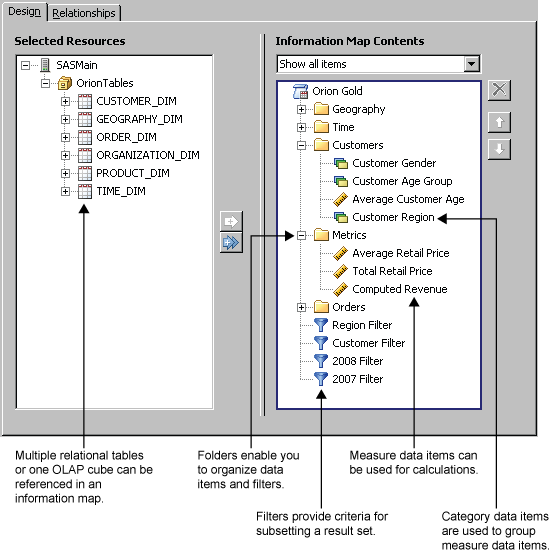What Is a SAS Information Map?
A SAS Information Map is business
metadata that is applied on top of the data sources in your data warehouse.
(Metadata is information about the structure and content of data.
An information map does not contain any physical data.) Information
maps provide business users with a user-friendly way to query data
and get results for themselves.
An
information map is based on one or more data sources, which can be
tables or OLAP cubes. Information maps that are based on more than
one table data source contain relationships that define how the data
sources are joined. An information map contains data items and filters,
which are used to build queries. A data item can refer to a data field
or a calculation. Filters contain criteria for subsetting the data
that is returned in a query. Folders can be used to organize the data
items and filters so that business users can easily locate information
within the information map.
To create an information
map, you can use either SAS Information Map Studio, an application
that provides a graphical user interface (GUI) for creating and viewing
information maps, or the INFOMAPS procedure that is described in INFOMAPS Procedure.
